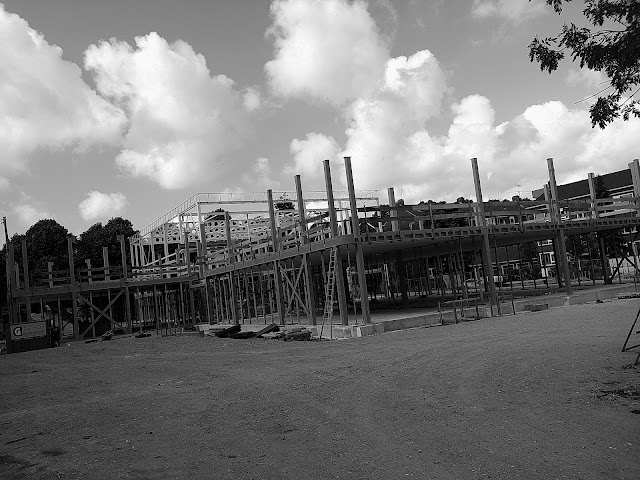You certainly saw the ads all over social media, the "cheap" camera that does not have a screen and is supposed to replace disposable film cameras. I have seen the ads, I ignored the ads, still, I liked the idea of a non-chimpable camera. Ordering... too much of a huzzle.
Lately, I was searching for something at MediaMarkt. Just walking along the by now tiny camera section. And there it was, the Camp Snap for €69. So, I grabbed one.
What a surprise this little bugger is! I knew about ability of the camera to use image profiles, however, I was unaware of the extend of popularity of such profiles by now. For those unfamiliar with the product, it feels really cheap and light, fits into pockets.
There are presently (still) a few different models on the market. Make sure to get the V105. This version is equipped with eyes for a shoulder-strap. While I won't be using a strap with this device, it also switches on by a mechanical switch, rather than the shutter button, which I believe is very beneficial. Also, the V105 comes with the latest firmware, the one that supports those image profiles I mentioned above.
The Camp Snap webpage offers an interface to create your very own profiles, which is excellent! Right away I tested some low-key high-contrast black&white stuff. Looking really good! Of course, this is a tricky profile, since the good looks strongly depend on the lighting situation.
Some experiments later, the idea popped up to create a very very faded or flat "filter" (as the profiles are called). The thought behind that was to have a decent latitude for post-production, similar to log-profiles in video-recording. In essence, this is the opposite to the gritty B&W profile I mentioned above.
And here was the surprise. Just using Google-Photos, the adjustability of the images is enormous. A flat profile is of course very forgiving what lighting is concerned.
For those interested, here is my first version of the faded (flat) profile.
As you can see, I pushed blues a little bit and reduced green. The intention was to create a balance between green and blue. Brightness is slightly up, to avoid underexposed shadows. However, maybe this blows out the highlights more than necessary. Also, contrast could potentially still be a little bit to high.
Next try (untested):
So, one generates these "filters" and put a single one in the root-directory of the cameras µSD-card. Meaning, whatever lurks there will be used until replaced by something else (or deleted).
How can we do that in the field, without a Chromebook (in my case)?
I created a directory on the µSD-card containing all my filter files. In the field, usually I would have my phone with me. The camera can connect to my phone with a USB-C-to-USB-C-cable. In fact, the cable that came with the camera. Once connected, I delete the filter-file in the root-directory and copy one of the files from the filter-directory into root. => Unmount the camera from the phone. Done!
With the next power-up of the camera, the filter-file is read and used.
In the respect of being able to shoot extremely flat images, this camera is almost as good as one that can shoot raw. And yes, flat images and raw files, both require post-processing...
PS: I just found out that the "very_flat" profile is a good starting point to B&W image creation using Google Photos.











